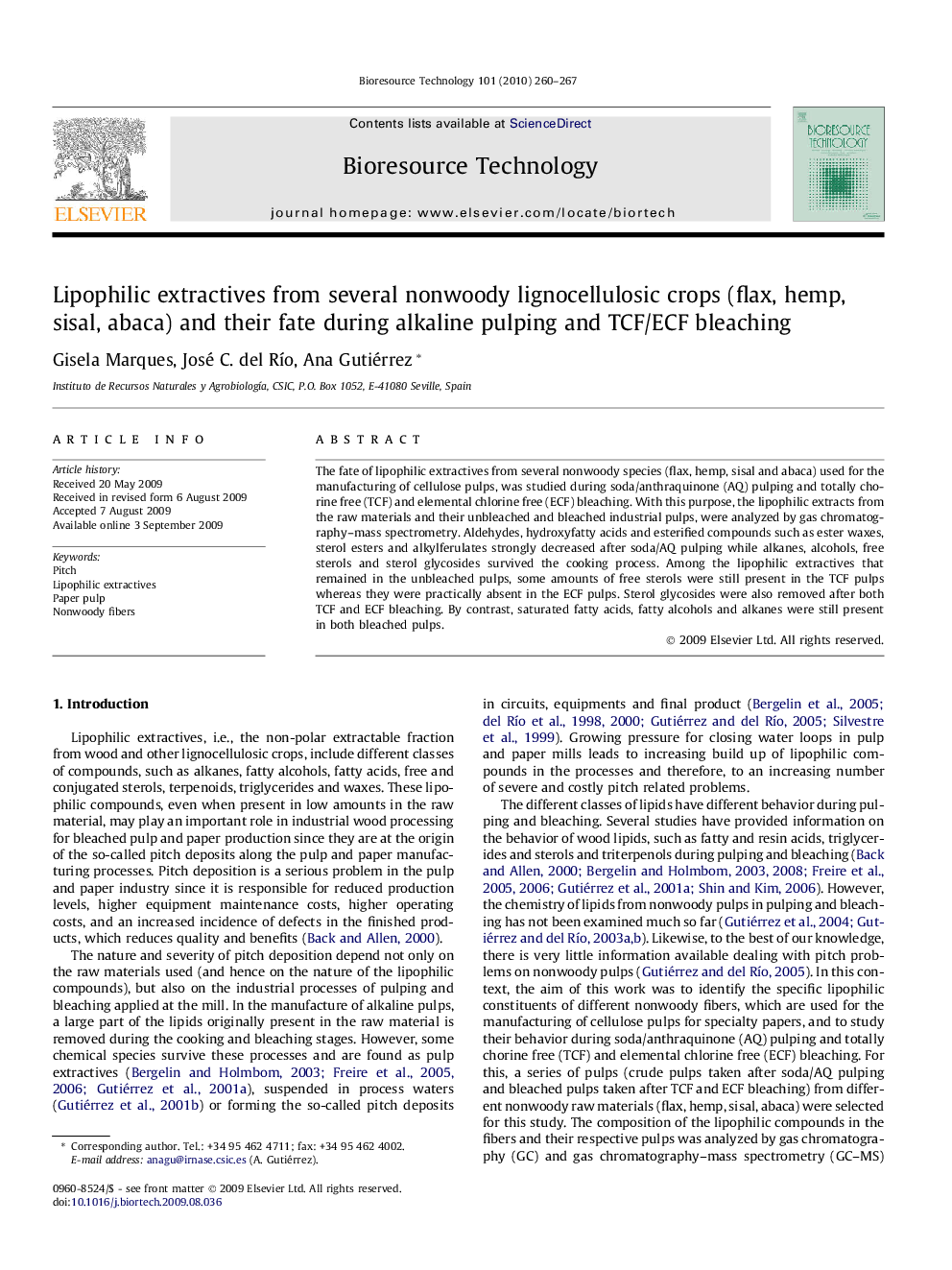| Article ID | Journal | Published Year | Pages | File Type |
|---|---|---|---|---|
| 683105 | Bioresource Technology | 2010 | 8 Pages |
The fate of lipophilic extractives from several nonwoody species (flax, hemp, sisal and abaca) used for the manufacturing of cellulose pulps, was studied during soda/anthraquinone (AQ) pulping and totally chorine free (TCF) and elemental chlorine free (ECF) bleaching. With this purpose, the lipophilic extracts from the raw materials and their unbleached and bleached industrial pulps, were analyzed by gas chromatography–mass spectrometry. Aldehydes, hydroxyfatty acids and esterified compounds such as ester waxes, sterol esters and alkylferulates strongly decreased after soda/AQ pulping while alkanes, alcohols, free sterols and sterol glycosides survived the cooking process. Among the lipophilic extractives that remained in the unbleached pulps, some amounts of free sterols were still present in the TCF pulps whereas they were practically absent in the ECF pulps. Sterol glycosides were also removed after both TCF and ECF bleaching. By contrast, saturated fatty acids, fatty alcohols and alkanes were still present in both bleached pulps.
